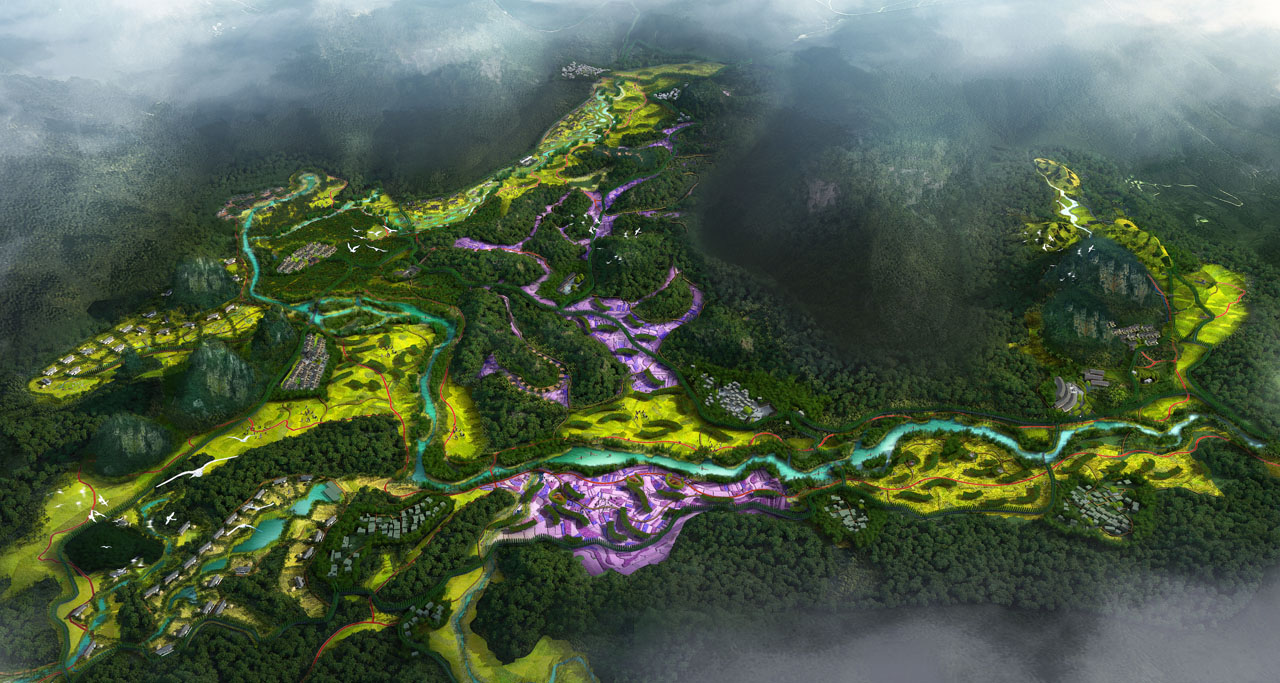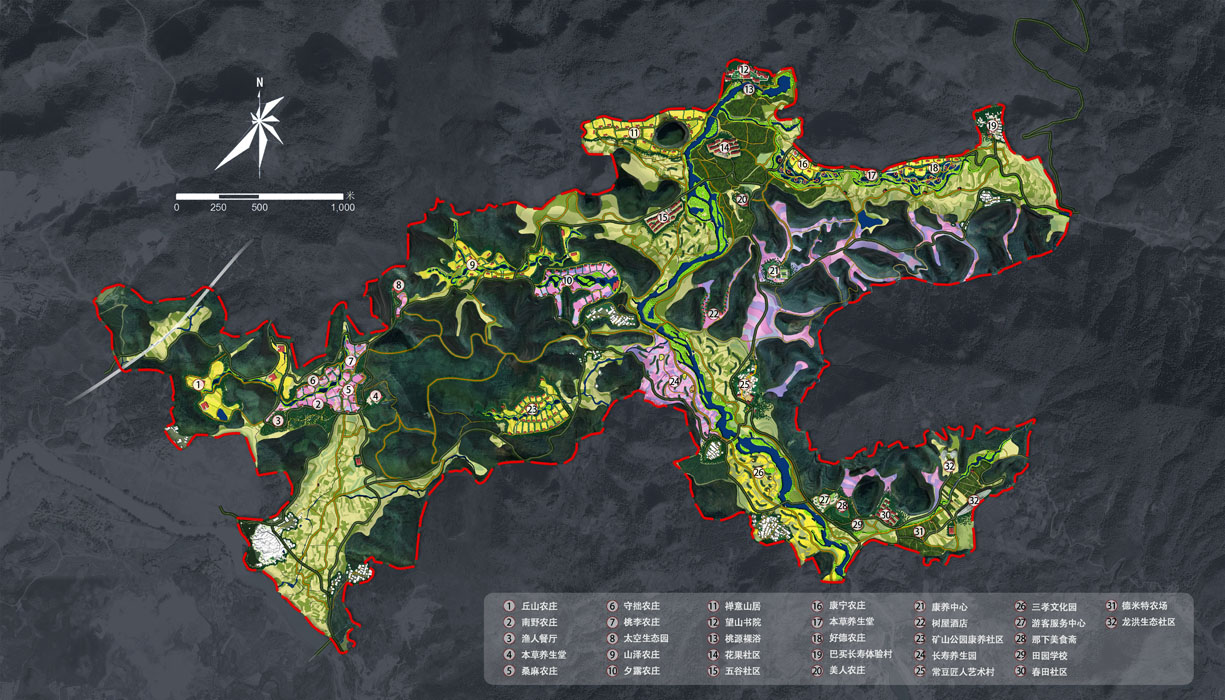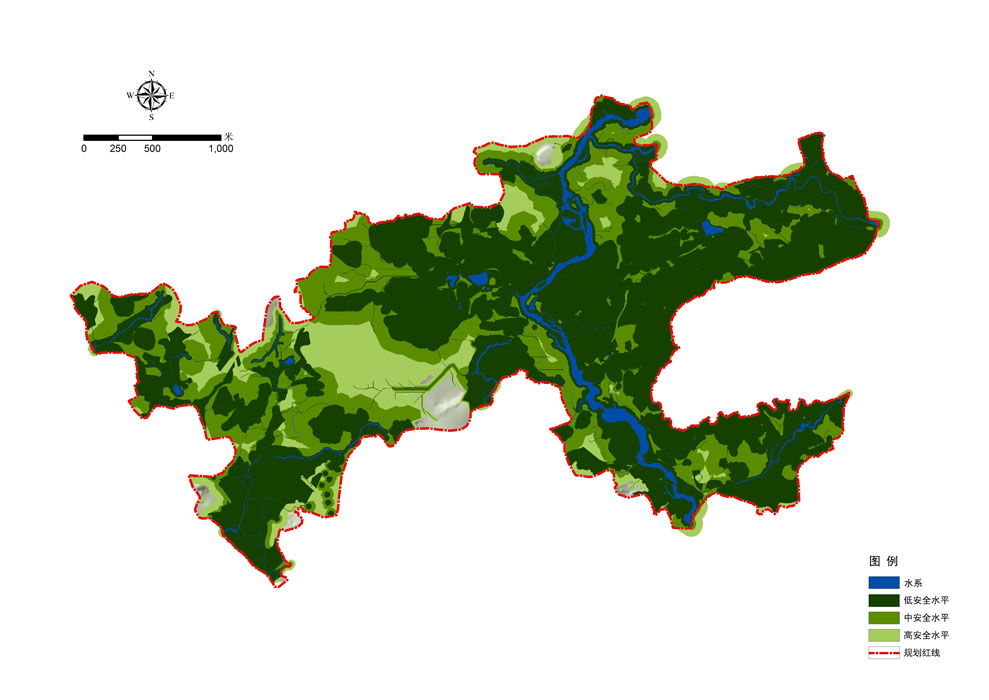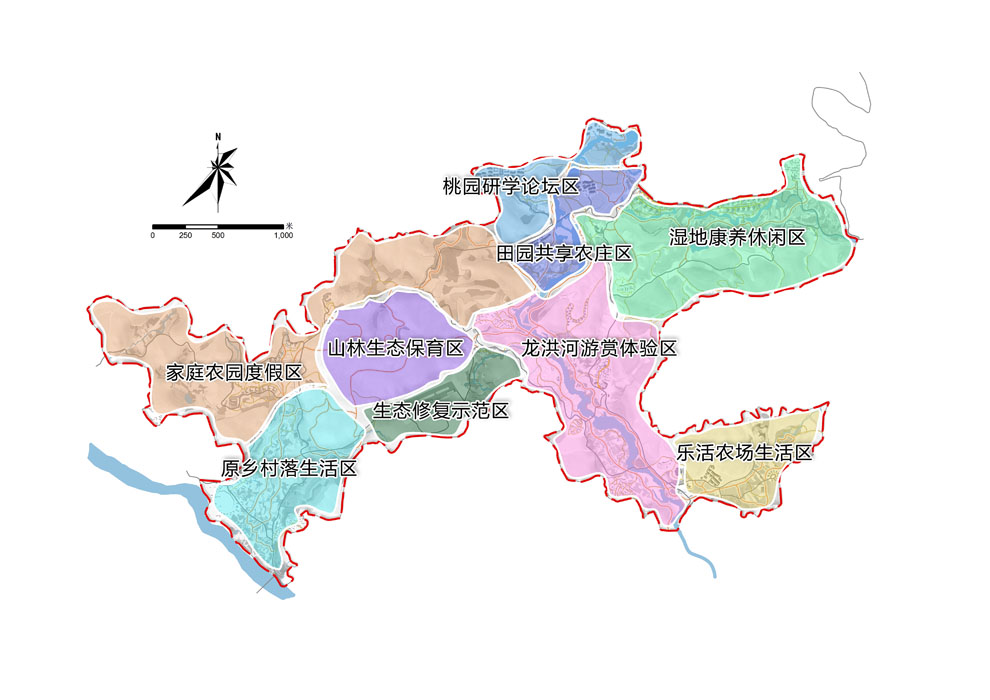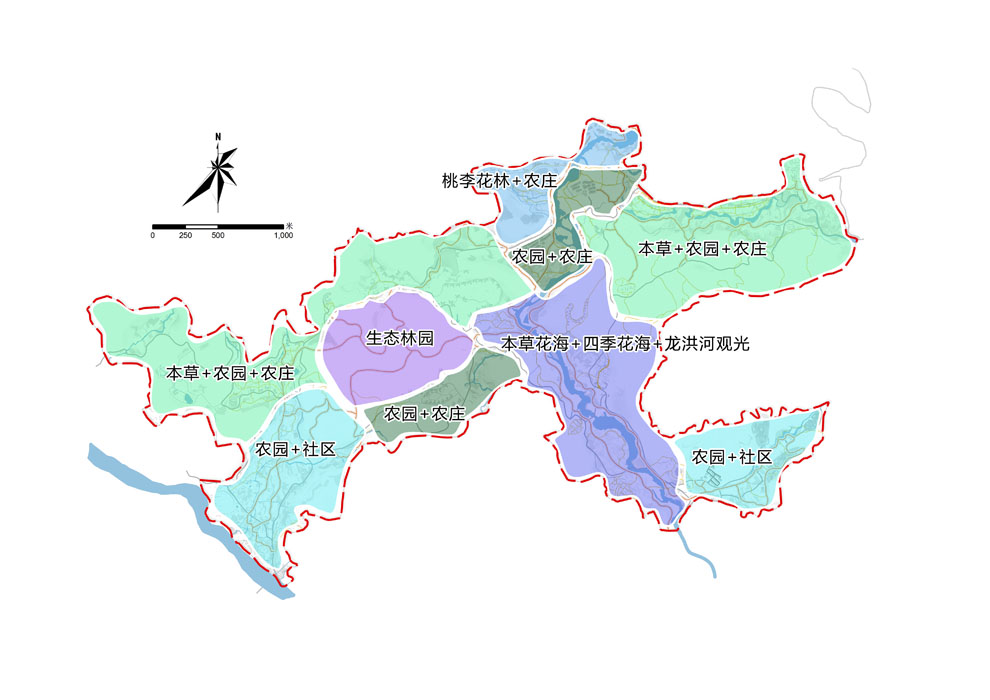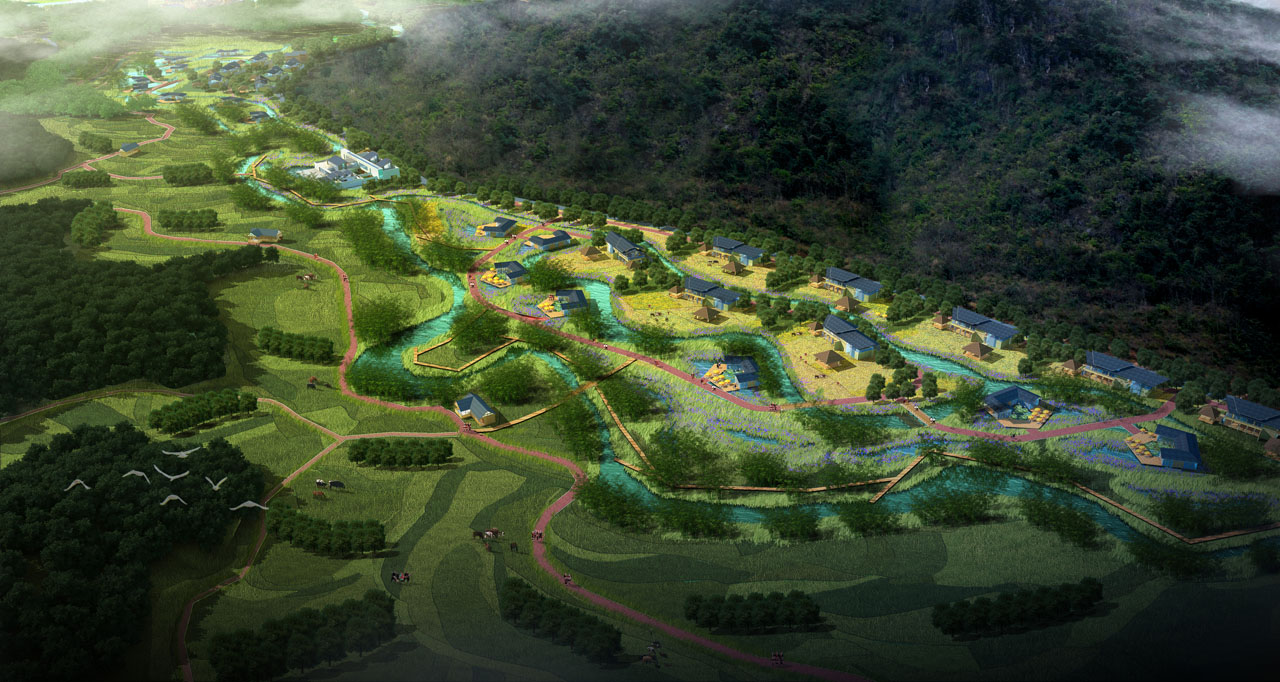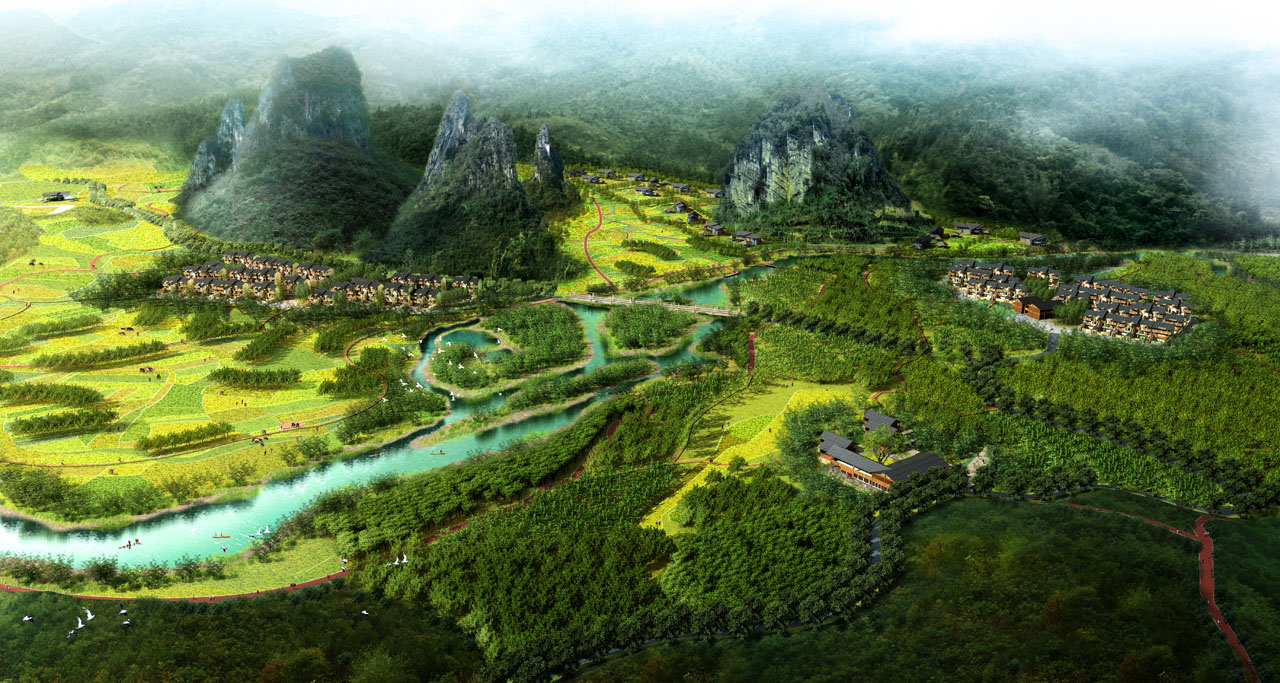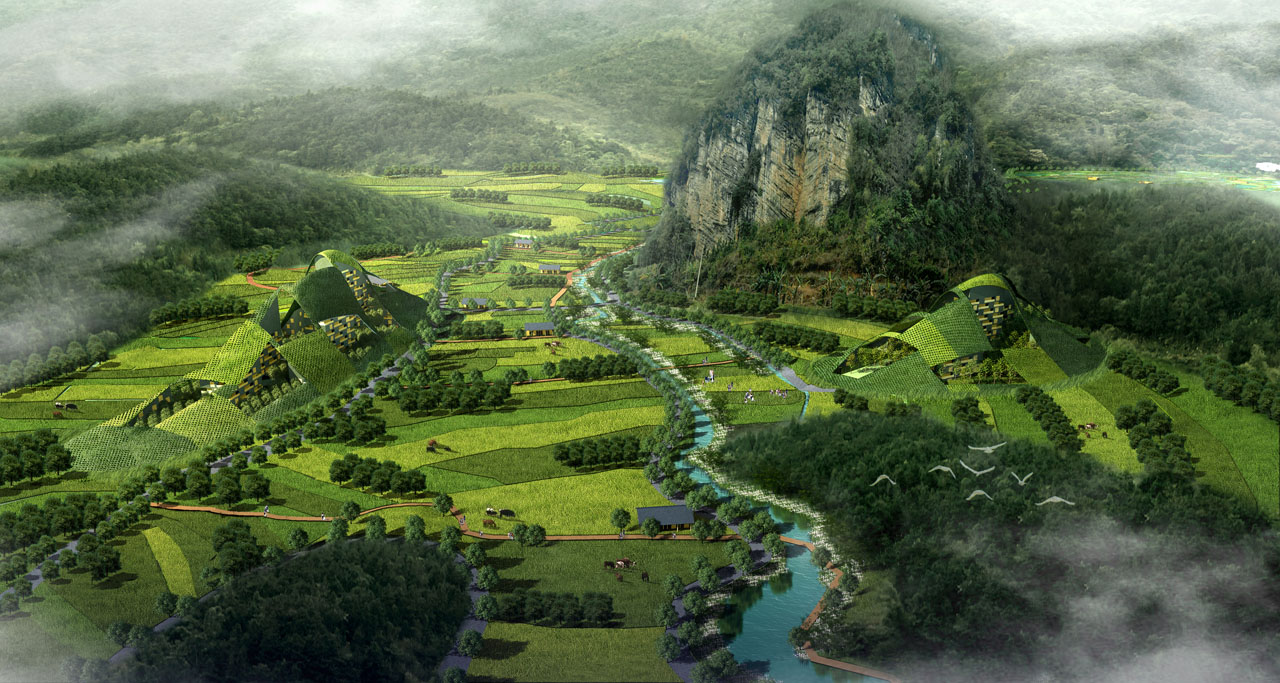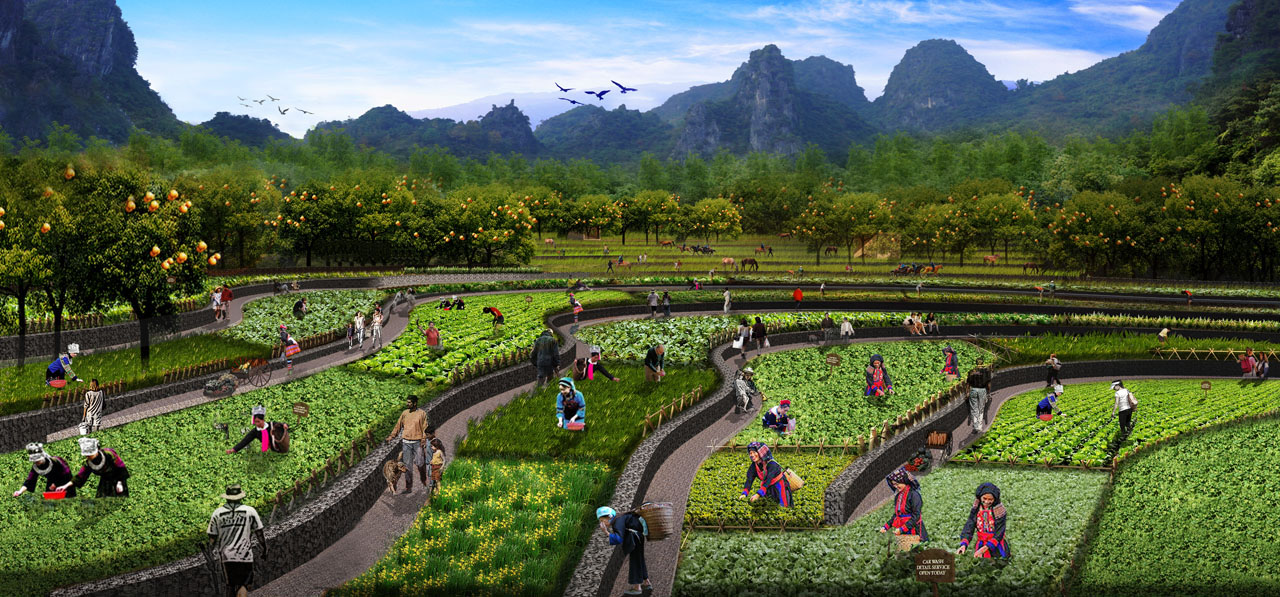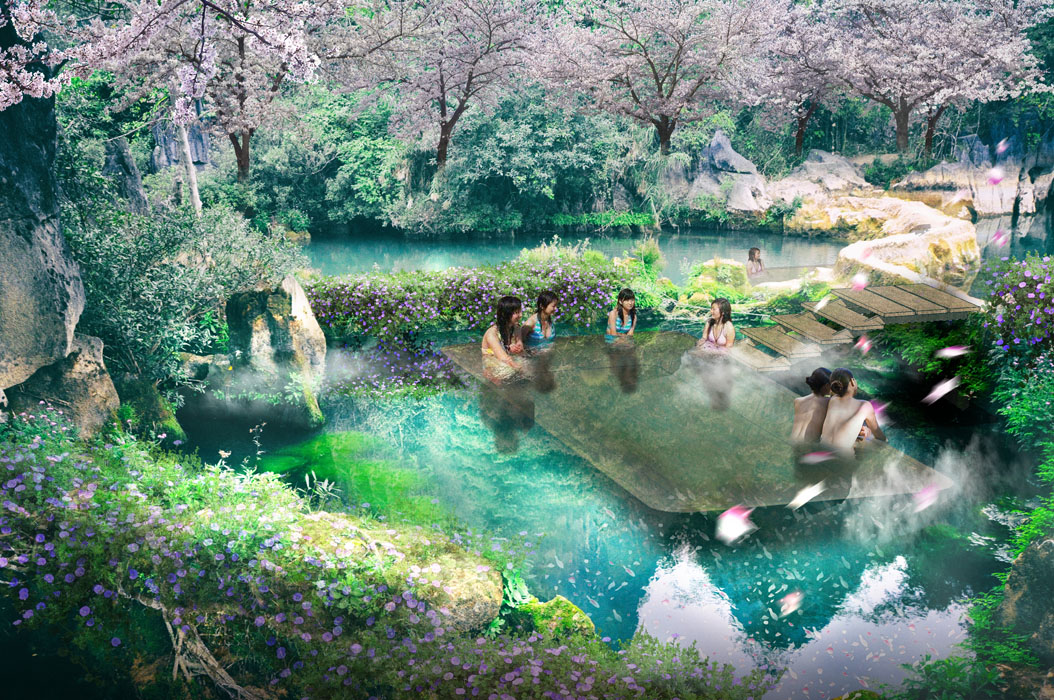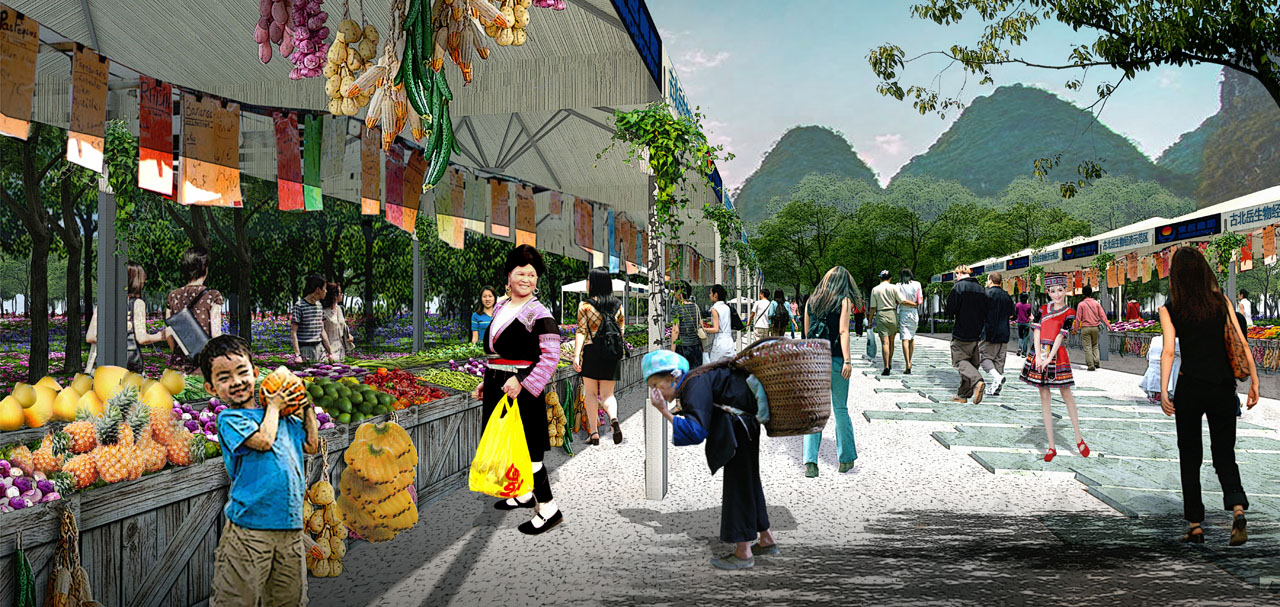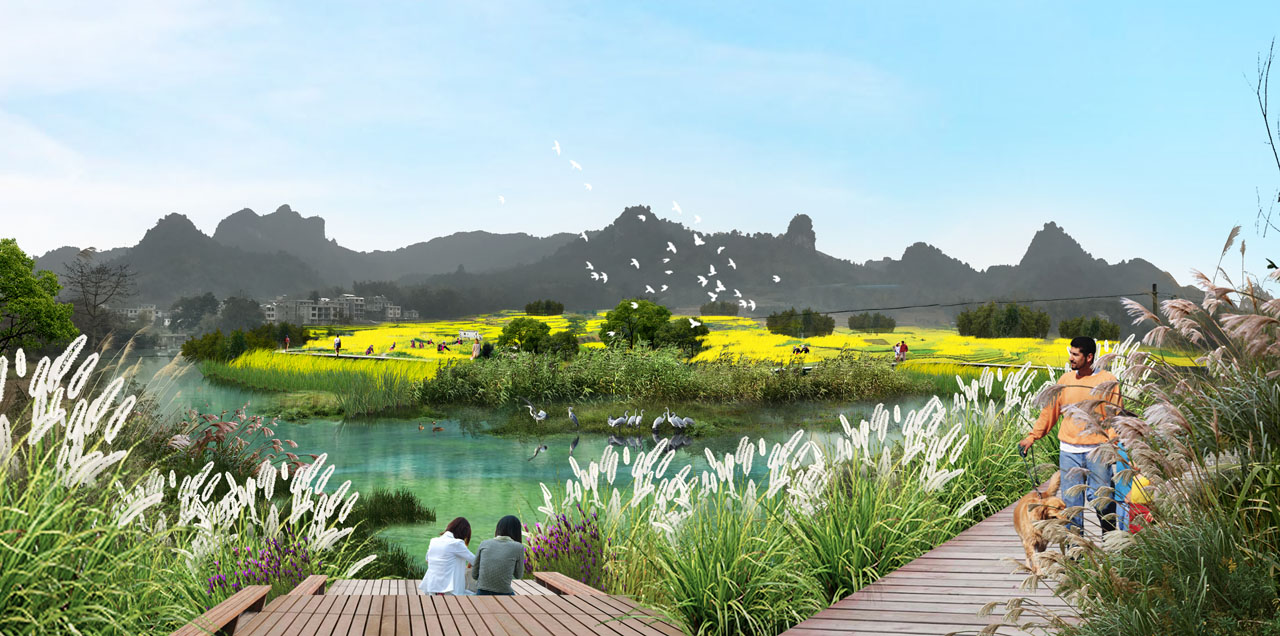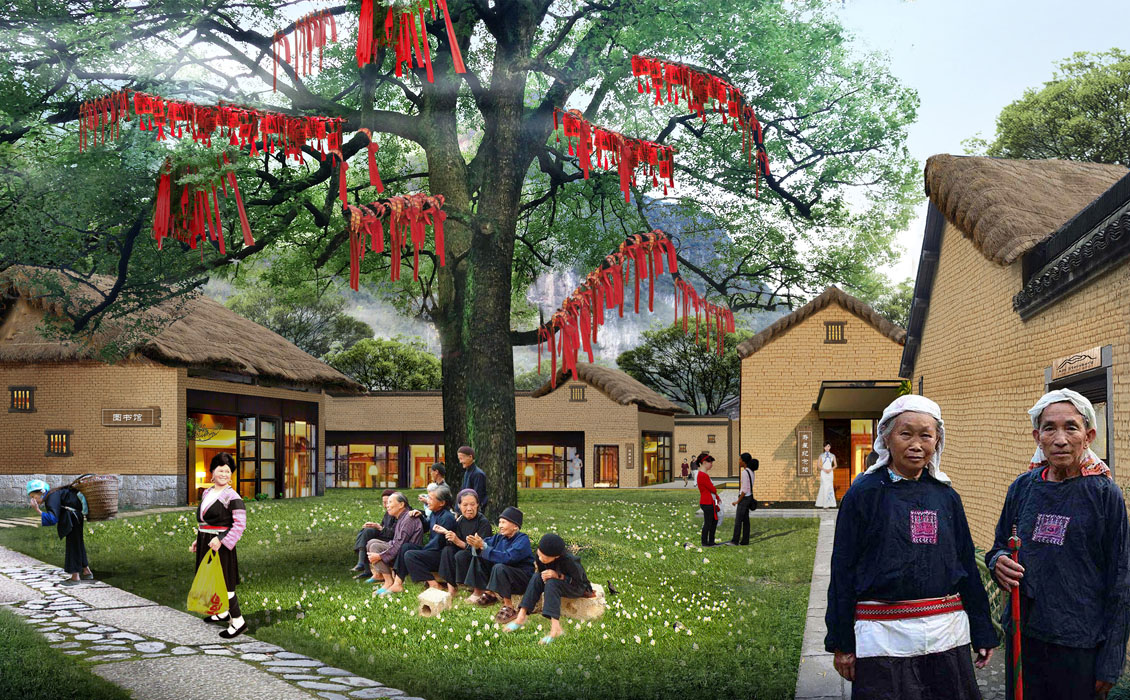Guangxi Bama Longhong Ecological Planning
Project Information
- Project Location:
- China Bama, Guangxi
- Project Scale:
- 8.79 Square Kilometers
- Design Time:
- December 2016
Project Profile
1. Project Statement
Bama is located in the northwest part of Guangxi Province, renowned as a world longevity village. The Longhong area is situated in the northeast part of Bama County, covering an area of 8.79 square kilometers. Its pastoral scenery is unique within Bama. Starting from the essence of health, the plan proposes the concept of "Great Health" encompassing environmental health, physical health, mental health, and social health. This concept will be implemented in the Longhong area of Bama to create the "Bama Long Live · Longhong Sanctuary" health community, leading a new ecological civilization of the times.
2. Objective and Challenge
Challenge and Goal 1: Protecting the natural ecological pattern while enhancing landscape features and selecting construction sites. The current natural conditions within the area are favorable, with unique mountain and pastoral landscapes. However, these are scattered, lacking unified connectivity between various zones. Some areas are mine tailings left from mining operations, and others are wastelands requiring ecological restoration and enhancement. Additionally, to promote regional development, suitable construction sites need to be selected while protecting the ecological foundation and space.
Challenge and Goal 2: Implementing the concept of Great Health. Great Health refers to the origins of health, including environmental, physical, mental, and social dimensions. The plan needs to integrate this concept into industries, products, spaces, environments, experiences, and management based on the unique resources of the Longhong area.
3. Design Strategy
Strategy 1: Constructing a Longhong health community with both external and internal dimensions.
Based on concepts of anti-planning, ecological infrastructure, sponge city theory, health community theory, and productive landscape theory, the health community will be constructed fundamentally. This includes two major aspects: "External" aspects represent China's most beautiful rural communities through ecological, productive, and living aspects. Ecologically, infrastructure and landscape protection are essential. Productively, eco-planting and tourism services will establish a "1+3" industrial infrastructure. In terms of living, residential, transportation, and living service infrastructures will be developed.
"Internal" aspects involve constructing health community conventions, guidelines, and plans based on ecological environment, physical, mental, and social health. Ecologically, guidelines for ecological safety control, environmental management, and environmental protection agreements will be established. For physical health, agricultural production guidelines and health management plans will be created. Psychological health will involve developing psychological care, leisure plans, community-friendly industries, and Longhong research plans. Social health will focus on creating neighborhood agreements, shared communities, member agreements, harmonious family plans, special care plans, equal social plans, community activity plans, and the "Ten People" plan in Bama.
Strategy 2: Establishing product planning strategies in three major aspects: living, production, and residence.
Living strategies will involve resettling current practices, promoting livable and business-friendly green communities, and respecting indigenous lifestyles and environments. Various career opportunities and employment platforms will be provided to residents. Ecological, energy-saving measures and sustainable production models will be adopted in community construction.
Production strategies will adopt organic production, three-industry linkage, and regional sharing. Leveraging Longhong's high-quality agricultural resources, organic agriculture and rare medicinal herb combinations will be developed under Demeter standards, integrating the Great Health culture to create the primary organic industry. Various agricultural product chains will be expanded, forming a "1+3" industry model. Technologically, it will serve as a practice base for the Great Health industry system, with spatial product sharing across regions.
Residence strategies will adopt comprehensive linkage, multiple experience, and complete supporting planning. Integrating regional resources, immersive health-themed leisure agriculture will be developed. Multiple-depth experience projects will be created in lifestyle. Comprehensive improvements will be made to various tourism elements.
Strategy 3: Using farm construction models as building units to preserve farm structures to the maximum extent.
To preserve the original site foundation, two spatial construction models have been designed. The first model, the shared farm model, will dismantle villages, construct original ecological health communities, preserve farmland, and reassign original farmland rights based on farm buildings. The second model, the independent farm model, will restore wasteland ecologically, with each farm distributed organically and independently along the foothills and fields.
4. Conclusion
Through research and exploration of the Great Health concept, the plan constructs the Longhong health community from ecological, physical, mental, and social health perspectives. Combining Bama Longhong's superior ecological resources and longevity culture, ecological infrastructure and innovative construction models will be used to create a new civilized demonstration area of living, working, and playing in a paradise outside the world.
In the future, people will accompany the Longhong health community with pastoral landscapes, befriend mountains and rivers, explore life and culture, and return to innocence and simplicity. Bama Longhong will serve as the starting point for Great Health construction, welcoming the ecological civilization of the times.
